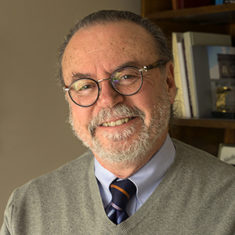Common Ground Must Be Discovered And Rapport Must Be Built Through Good Faith Negotiation.
By Thomas J. Roach
Public opinion is arguably the most powerful force impacting corporate America. To survive, companies must maintain a degree of consensus with neighborhood groups, shareholders, customers and employees.
Public relations professionals manage this by overseeing communication processes like advisory boards, public meetings, focus groups and suggestion boxes – processes that facilitate an ongoing exchange of information between the organization and its publics.
Sometimes, quarries ignore the need to exchange information with their key publics and find themselves in a public debate where they have to sway public opinion.
Anyone who took a speech class knows about inventing arguments and organizing them. But influencing people in a classroom or an auditorium is very different from trying to influence a mass audience like the one reached by television broadcasts and newspapers. Business communicators have to be ready to address the mass audience through channels of mass communication, and that discourse is more complicated, and few understand how it works.
Research on public opinion has revealed some things that might surprise you. Here are some conclusions derived from more than 50 years of academic and professional public opinion studies.
- Contrary to what most people believe, mass media does not inject opinions into people. Rather they serve as agenda-setters. They don’t tell us what to think; rather they tell us what to think about.
- The greatest influence on people’s opinions is peer groups. Most of us have groups of people we respect, and we don’t want to be alienated from them. So, when topics come up that we don’t already have strong feelings about, we read the group and try to identify ourselves with the safest opinion.
- Another misconception is that people are sponges, absorbing everything they hear. Actually most of us are selective users of information. Usually we seek and pay attention to information that agrees with opinions we already hold or are supported by our peer groups. Anyone who wants to be persuasive needs to account for those opinions.
- Surveys do not represent public opinion. Meaningful, long-lasting opinions are formed from the give and take of debate with our peers. When we state our opinions face-to-face and defend them, we participate in forming a reasoned and more sustainable public opinion. Surveys are really only an aggregate of private opinions. They are conducted in private and go unchallenged. Thus, they are usually more shallow and likely to change than public opinion galvanized in public debate.
Let’s apply what we know about public opinion to a familiar quarry problem where a NIMBY group is demanding legislation to limit the activities of a quarry operation. Ignoring the NIMBY group and appealing directly to local legislators is not a good strategy because the NIMBY group represents public opinion, and elected officials need to appease the public if they want to keep their jobs. The quarry has to get the attention of its public detractors, work with them, and use them to influence local officials, not the other way around.
Since we know that people are more influenced by their peers than by ads and guest editorials in the newspaper, negotiating face-to-face with the NIMBY group is the best way to resolve the problem. We also know that people are not inclined to listen to opinions that are inconsistent with opinions they already hold.
We can’t start a dialogue by making arguments that oppose their positions. Common ground must be discovered and rapport must be built through good faith negotiation. If a mutually agreeable proposal is reached, then that is communicated through mass media, and the local officials will react accordingly.
This isn’t easy, but it is much more feasible than blundering into a public argument in the newspaper and on television that galvanizes opposition and leads to inevitable negative reactions from public officials.
In the court of public opinion, one doesn’t win by attacking the judge and the jury.

Thomas J. Roach Ph.D., has 30 years experience in communication as a journalist, media coordinator, communication director and consultant. He has taught at Purdue University Northwest since 1987, and is the author of “An Interviewing Rhetoric.” He can be reached at [email protected].

